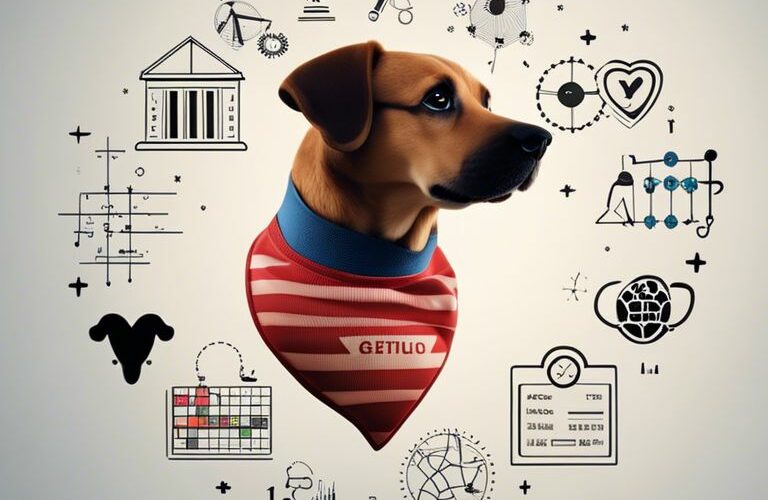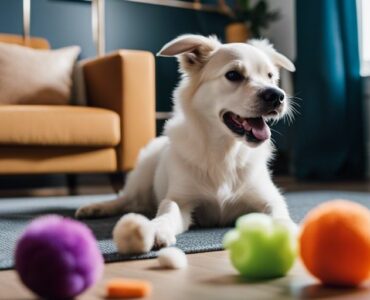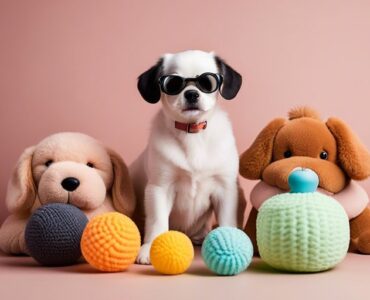Canine affinity for specific playthings is a fascinating and highly researched topic in the realm of animal behavior. Dogs’ preferences for certain toys can be influenced by a myriad of factors, including their individual personality traits, genetic predispositions, and past experiences. Understanding the science behind dogs’ love for particular toys can provide insight into their cognitive and emotional needs, as well as help pet owners make informed decisions when selecting items for their furry companions. In this blog post, we will delve into the scientific explanations behind this intriguing behavior and explore how it impacts the overall well-being of dogs.
Table of Contents
Key Takeaways:
- Smell is a major factor: Dogs have a highly sensitive sense of smell, and they are drawn to toys that have certain scents, such as their owner’s scent or the smell of another animal.
- Texture and taste play a role: Dogs may prefer toys with specific textures or tastes, such as rubbery or chewy toys that are satisfying for them to chew on.
- Behavioral conditioning influences toy preference: Dogs may develop a preference for certain toys based on previous positive experiences or associations with those toys, leading to a strong attachment to them.
- Breed-related instincts are a factor: Certain dog breeds have specific instincts and preferences when it comes to toys, which can influence their choices and the way they interact with toys.
- Individual differences matter: Just like humans, each dog has its own unique preferences and personality, which can influence their love for certain toys over others.
Dogs’ Toy Preferences
Some dogs seem to have a strong preference for certain toys over others. Whether it’s a favorite squeaky ball, a plush stuffed animal, or a chew toy, dogs often display a clear preference for specific types of toys.
Textural Attraction
With a keen sense of touch, dogs are drawn to toys with different textures. Soft and plush toys may be comforting to some dogs, while others may prefer the rough texture of a rubber chew toy for teething. The variety of textures available in toys allows dogs to engage their senses and find the tactile experience that they enjoy the most. Additionally, certain textures may provide a soothing or stimulating sensation for dogs, leading them to favor toys with specific textures
Color and Shape Recognition
Preferences for certain toys may also be influenced by color and shape. Dogs have the ability to distinguish between different colors and shapes, so they may show a preference for toys that are visually appealing to them. Some dogs may be drawn to bright, colorful toys, while others may prefer the simplicity of neutral tones. Similarly, the shape of a toy can also play a role in a dog’s preference, with some dogs showing a preference for certain shapes over others.
Textural Attraction and Color and Shape Recognition are two key factors that influence dogs’ preferences for certain toys. By understanding these factors, owners can provide their dogs with a variety of toys that cater to their sensory and visual preferences, ultimately enhancing their play experience.
The Science Behind Scent and Sound
Clearly, dogs have a strong affinity for certain toys, and often, it’s the scent and sound of these toys that captivate them. Understanding the science behind the importance of scent and sound in toy selection can help pet owners choose the most engaging and stimulating toys for their canine companions.
Importance of Scent in Toy Selection
One of the key factors in a dog’s love for certain toys is the scent. Dogs have an incredibly sensitive sense of smell, and they are drawn to toys that carry familiar scents. This could be the scent of a favorite person, another dog, or even a specific environment. When a toy carries a familiar scent, it triggers feelings of comfort and security in the dog, making the toy more appealing.
Additionally, dogs may be attracted to toys with interesting and novel scents that stimulate their curiosity and engage their senses. The right scent can encourage a dog to play and interact with a toy, making it an essential factor in their enjoyment of playtime.
Sounds That Stimulate Interest
That’s right, sounds can also play a significant role in a dog’s attraction to certain toys. Dogs are highly attuned to various sounds, and they are naturally drawn to toys that produce enticing noises. Whether it’s a squeak, a crinkle, or a rustle, these sounds can capture a dog’s attention and pique their interest in a toy.
A toy that emits different sounds can provide mental stimulation and encourage a dog to explore and interact with the toy, promoting physical activity and playfulness in the process.
The Role of Breed and Personality
Now, let’s delve into the fascinating world of the science behind dogs’ love for certain toys. The role of breed and personality is crucial in understanding why dogs have specific toy preferences.
Breed-Specific Toy Preferences
Role: When it comes to toy preferences, different breeds of dogs have unique instincts and characteristics that influence their choices. For example, herding breeds such as Border Collies may be drawn to toys that allow them to chase and herd, while terriers may prefer toys that stimulate their natural prey drive. Understanding your dog’s breed-specific traits can help you select toys that align with their natural inclinations and provide enrichment and satisfaction.
Individual Differences in Play Style
For individual dogs, play style and personality also play a significant role in their toy preferences. Some dogs may have a more aggressive play style and enjoy toys that are durable and can withstand rough play. On the other hand, gentle and shy dogs may prefer softer, comforting toys that provide a sense of security. Understanding your dog’s individual temperament and play style can help you select toys that meet their specific needs and preferences.
Any dog owner should consider their dog’s breed and individual personality when selecting toys. It is important to provide toys that cater to their instincts and play style, as this can contribute to their mental stimulation and overall well-being.
The Impact of Human Interaction
After extensive research, it has been found that human interaction plays a significant role in a dog’s preference for certain toys. Dogs are highly influenced by their owners and their behaviors when it comes to choosing and playing with toys.
How Owners Influence Toy Choice
With consistent interaction and positive reinforcement, dogs are more likely to develop a strong attachment to specific toys. Owners who actively engage in playtime and bonding with their dogs often notice that their pets show a preference for toys that they have played with together. This bonding experience creates a sense of familiarity and comfort for the dogs, leading them to pick these toys over others.
The Bonding Effect of Playtime
Any form of playtime with their owners contributes to developing a strong bond between dogs and humans. The act of playing together releases oxytocin, also known as the “love hormone,” in both dogs and owners. This hormone strengthens the bond and deepens the emotional connection between them, leading to a more favored choice of toys that they have associated with these positive experiences.
Owners, in particular, play a crucial role in shaping the toy preferences of their dogs through consistent interaction, positive reinforcement, and fostering a strong bond through playtime. By understanding the impact of their influence, owners can effectively choose and introduce toys that resonate with their dogs’ emotional and social needs.
Conclusion
From above, it is clear that the science behind dogs’ love for certain toys can be attributed to a combination of factors. Dogs’ natural instinct to hunt and chew, as well as their developmental stage and individual preferences, play a significant role in determining which toys they are drawn to. Additionally, the appeal of certain toys may also be linked to the sensory experiences they provide, such as the texture, scent, and sounds they produce. By understanding these underlying factors, pet owners can better select toys that cater to their dog’s specific preferences and provide them with mental and physical stimulation. Ultimately, the science behind dogs’ love for certain toys is a complex interplay of instinct, development, and sensory experiences that contribute to their overall enjoyment and well-being.
FAQ
Q: Why do dogs have a preference for certain toys?
A: Dogs have a preference for certain toys due to a combination of instinctual behavior and individual personality. Certain toys may mimic natural prey, triggering a hunting response, while others may provide comfort and security. Additionally, dogs may have positive associations with specific toys based on past experiences.
Q: How can I determine which toys my dog will love?
A: Understanding your dog’s breed, age, and personality can help determine which toys they will love. For example, high-energy breeds may prefer toys that allow them to engage in physical activity, while senior dogs may favor softer, more comforting toys. Observing your dog’s behavior and preferences can also provide valuable insights into which toys they will enjoy.
Q: Is there a scientific explanation for why some dogs become attached to certain toys?
A: Research suggests that dogs form attachments to certain toys based on the release of endorphins and oxytocin, often referred to as “feel-good” hormones. When dogs engage with their favorite toys, these hormones are released, creating a positive association with the toy. Additionally, the familiar scent and texture of a beloved toy can provide comfort and security, further strengthening the bond between the dog and the toy.










Add comment